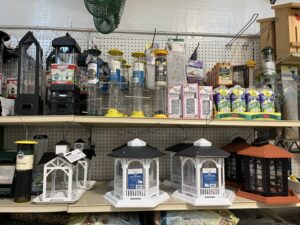
Don’t Let Commodities Ruin Your Season
As I write this in mid-September, the economic climate is tense and uncertain and, as a result, retailers are having trouble planning for the fall/winter 2022 holiday and spring 2023 seasons. As Wayne Gretzky would say, it’s hard to anticipate where the puck will be.
Inflation is running wild and the Federal Reserve will likely continue to raise interest rates aggressively in an attempt to tame it. This will lead to higher borrowing rates, credit card rates, and mortgage rates (cooling both new and existing home sales and making it more difficult for potential new homeowners) and raising the cost of inputs for most producers, leading to higher retail price points.
Though wages have increased significantly, they aren’t keeping pace with inflation, so workers have little to show for their wage gains — in some cases, having fewer discretionary dollars than before their wage raises. With the midterm elections coming in November, anything and everything that can be politicized is, with lots of verbal attacks but little action to really provide solutions to our economic concerns. And with the Russia-Ukraine war’s economic sanctions being leveled by both Russia and the Western bloc, Western Europe is facing severe natural gas shortages resulting in major global supply/logistics challenges and inflating prices, including in the U.S., where winter heating and manufacturing natural gas prices are expected to increase up to 70%. Though no one can accurately predict the final severity of the economic downturn and the specific timing, more economists are talking about an impending global recession early in the first half of 2023.
Consumer Concerns
Retailers are dealing with a dramatically different consumer than just a year ago. During the pandemic shutdowns, consumers were flush with stimulus cash and increased unemployment benefits, with limited opportunities to spend it, but spend they did — especially on big ticket and highly discretionary and luxury items.
But when things opened up, they suddenly shifted to experiential spending — entertainment, dining out, travel and traveling to see family and friends. As inflation kicked in, they continued to spend on experiences, but dramatically curtailed their spending on most everything but the basics. This led to heavy retailer overstocks on higher-priced inventory the retailers had ordered to catch up to the spending patterns of the consumer that no longer existed. First-half-2022 results showed high inventory clearance markdowns, major profit drops, and break-even (at best) sales with lower traffic and transactions (most sales increases were achieved by higher inflation-driven retails).
Retailers are uncertain and hesitant looking forward to the 2022 holidays and spring 2023. They still have no clear picture on what consumer demand will look like and, with “hangover” inventory, they are extremely cautious and conservative on their buys. Likewise, consumers are uncertain on where the economy is heading and where it will wind up. They are still battling inflationary expenses and are focused on buying basics, with the exception of spending on experiential travel and entertainment.
Where Consumers Are Shopping
In addition to focusing their purchases on basics and staples, consumers are also changing where they buy their products and services in this inflationary period. An example of this is the grocery/produce category. Traditional supermarkets, whose assortments are primarily based on national brand items, are reporting lower store traffic and transactions. The only reason they are showing sales increases is the higher inflation-driven retail prices on the fewer items that are being purchased.
Consumers are increasing their grocery/produce purchases in big box/mass merchandiser stores, dollar stores, convenience, and low-price stores such as Aldi. These sub-channels are generating higher traffic, transactions, and unit sales, and are also benefiting from higher inflation-driven retails. Where traditional supermarkets primarily build their assortments with national-branded items (with the major exception of Kroger), these other retail channels are focused on more limited assortments of private label, house brand or controlled label products. And most of the items they carry are considered “commodities” — products that have wide availability, typically with lower margins, with little (or no) consumer-perceived difference in taste or quality.
When there’s no discernable taste or quality difference between the national branded box of corn flakes (Kellogg’s) in a traditional supermarket and the Aldi’s private label brand (Millville) — and with Aldi’s price being 40% lower than the traditional supermarket’s national brand — it’s no surprise that more consumers are shopping at the low-price retailers like Aldi. And these low-price retailers are taking away some of the differentiation-defining high-service advantages previously offered solely by the traditional supermarkets by now offering buy online, pick up in store and third-party home delivery services, while still maintaining their low prices. (Full disclosure: My family regularly shops both a high-service/high-priced traditional supermarket, Lunds & Byerlys, and Aldi, and we’ve been shopping at Aldi more and Lunds & Byerlys less as inflation rages.) But as we shift our shopping trips more toward Aldi, we still shop Lunds & Byerlys because they offer services and food offerings not available at Aldi, such as a deli, prepared foods, a sushi bar and full-service meat/seafood departments, in addition to having an in-house post office.
Your Branding Matters
So, what are the morals of my discussion about grocery and produce, and how does it apply to your garden center operation? First, consumer behaviors are changing — and quickly, driven by the reduced spending power resulting from rampant and persistent inflation and higher interest rates affecting almost every aspect of their lives. Second, consumers will seek out the lowest price on commodity products, even changing their traditional shopping venues to get the best deals. And third, consumers will trade up to retailers and for products that offer innovation, higher perceived quality, broader and more appealing full-service assortments, higher service offerings, expertise and better experiences.
Yes, your garden center will have to carry the same commodities everyone else in your marketplace carries to be competitive; it’s the cost of entry to play the retail garden game. But your operating cost structure will, most likely, prevent you from being the price leader in your market. Unless you can convince the consumer before they come into your store to visually see the quality difference demonstrating that you offer discernibly superior quality to justify a higher retail price than your market competitors, that consumer will likely opt to purchase from the lower-priced operator.
Your challenge is to let the consumer know that you offer the commodities, but emphasize the message that you have the things the low-cost provider doesn’t or can’t provide — things that will enhance their satisfaction and enjoyment with the products they purchase from you, things like your breadth of assortment, the expertise you offer, the services you can provide, the ideas and inspiration you convey, and the fantastic experiences customers will encounter.
There’s a trend toward reducing the number of shopping trips the consumer makes, with more focus on one-stop shopping, and you have the opportunity to plead your case as the provider who can deliver this benefit to the consumer in your market.
Now is the time to hone your brand image and brand message to better communicate the benefits you offer your customers that addressed their challenged spending limitations — benefits that can also aid your top and bottom lines at the same time. Remember, your brand message not only communicates who you are to the consumer, but also what you do that benefits them — a message of why they should think of you first and shop your store, why they should spend their fewer discretionary dollars with you, rather than the guy down the street with lower prices on commodities.
Commodities will play a significant role in your sales success this season, but you have so much more to offer the customer — things that transcend price alone. Your brand image and brand message are integral in communicating these differences to the consumers in your marketplace; it’s time to re-think, reassess and fine-tune the essence of your brand to better address the changes impacting your customers’ lives!
Don’t let commodities ruin your season …
For an enhanced reading experience, view this article in our digital edition.


















 Videos
Videos





